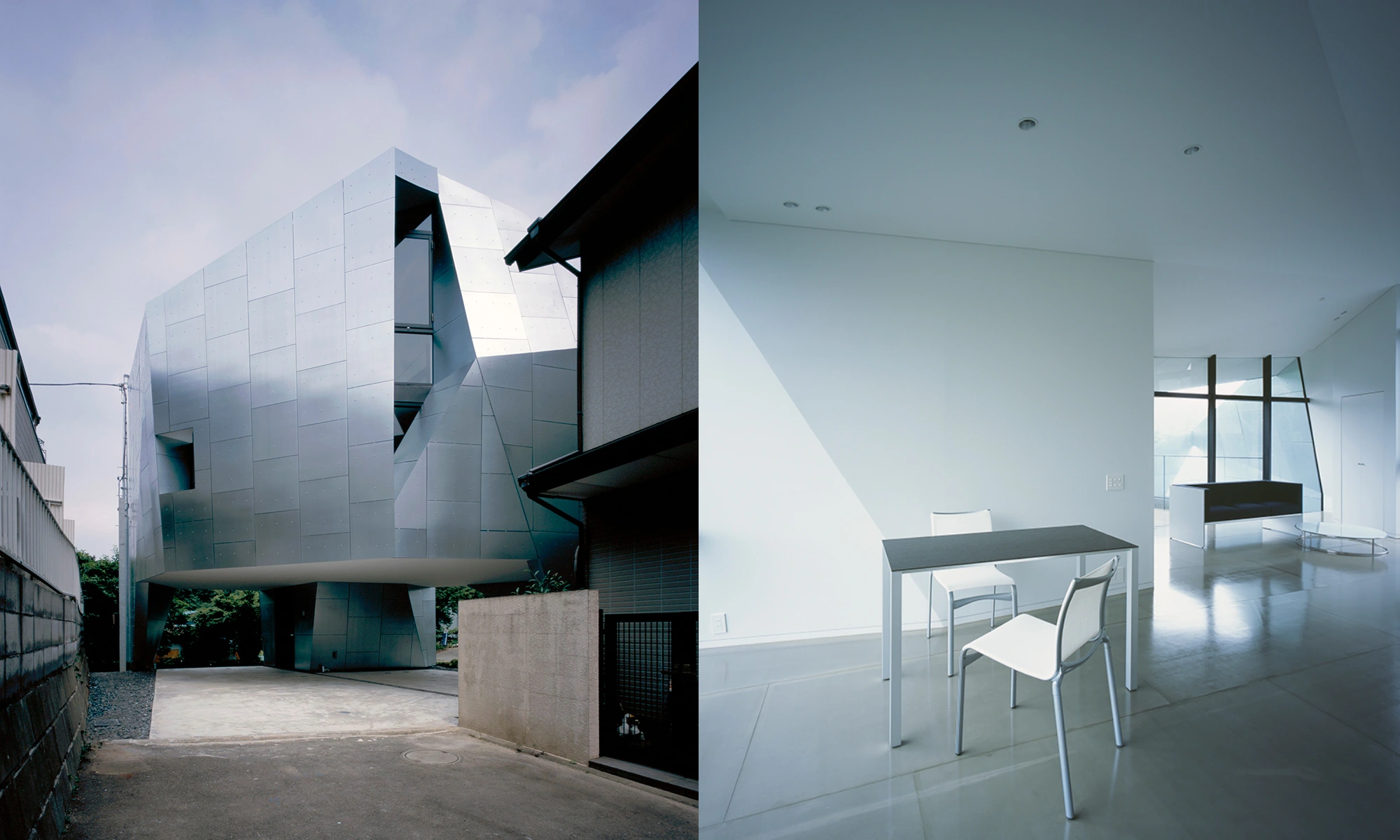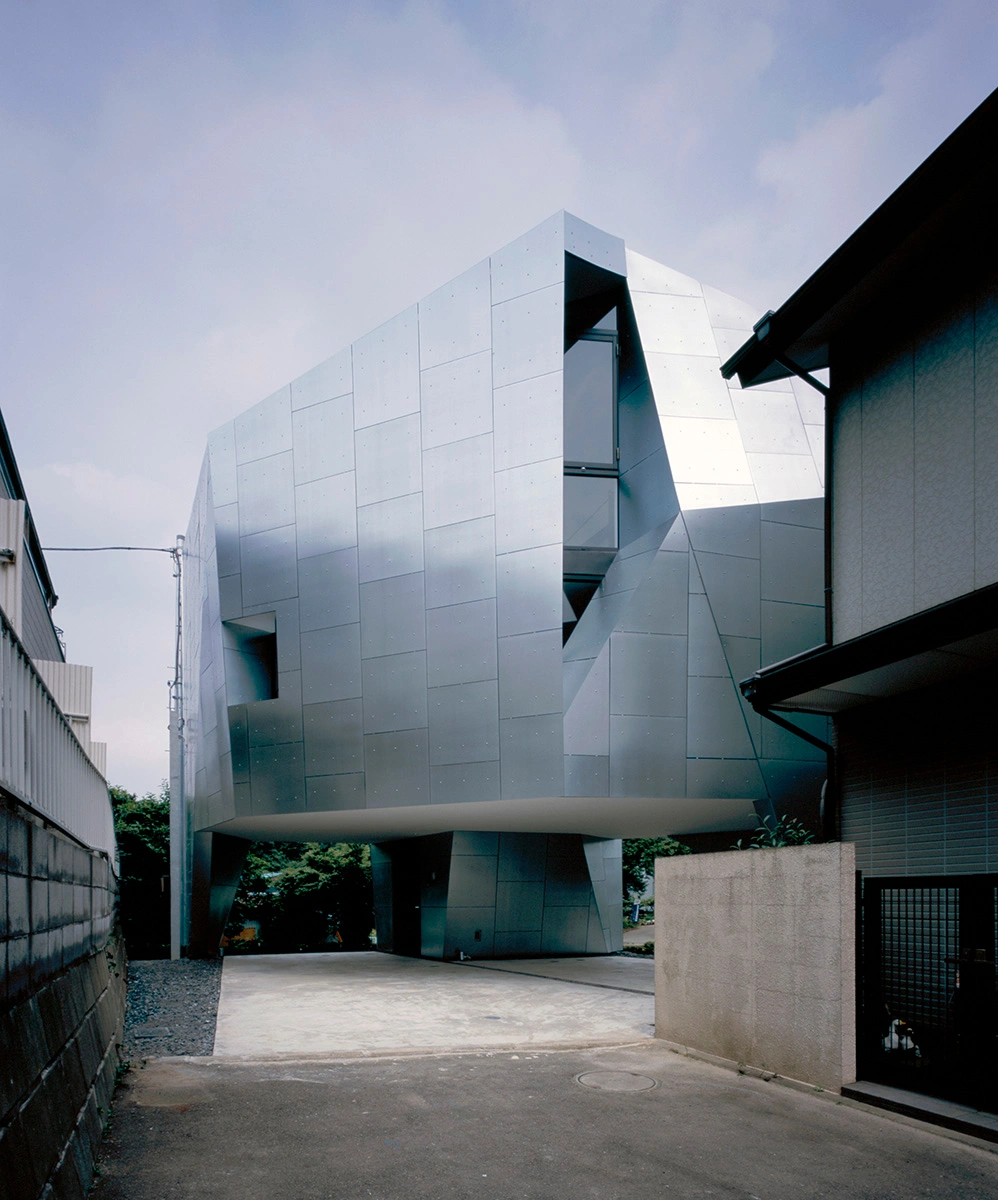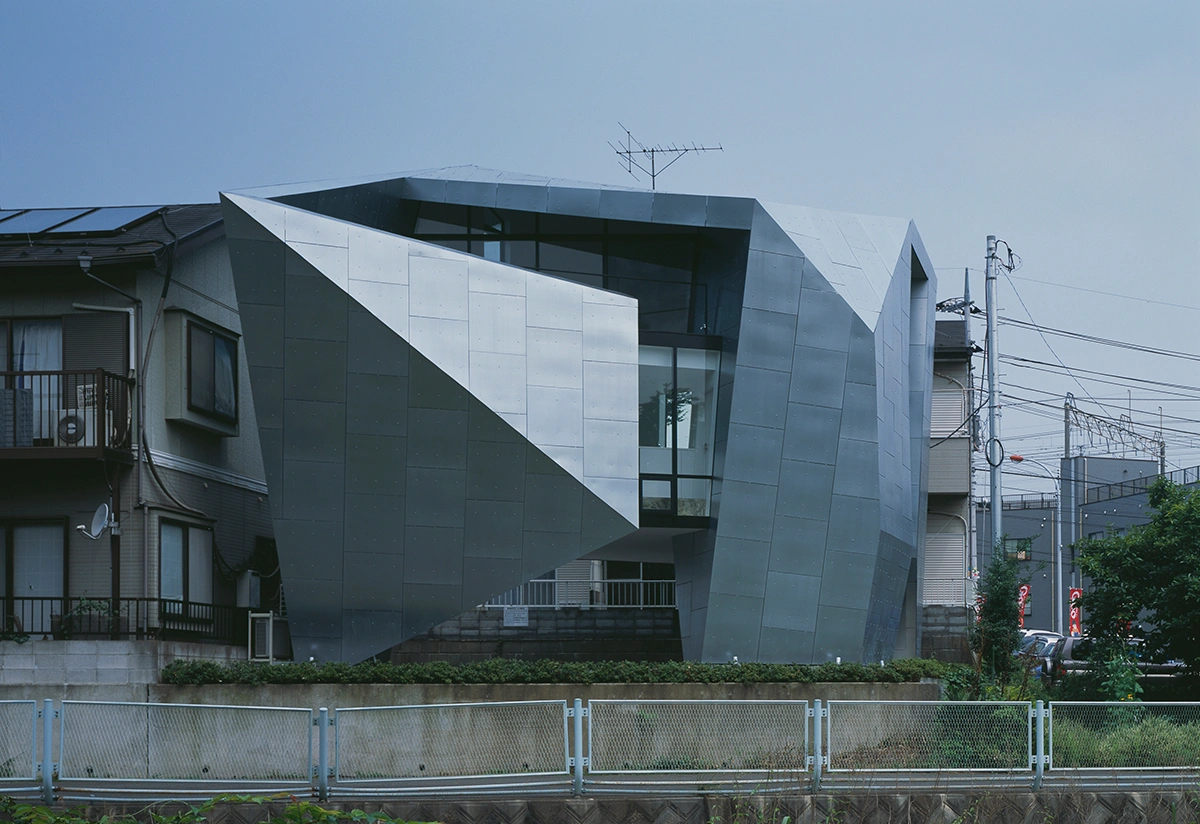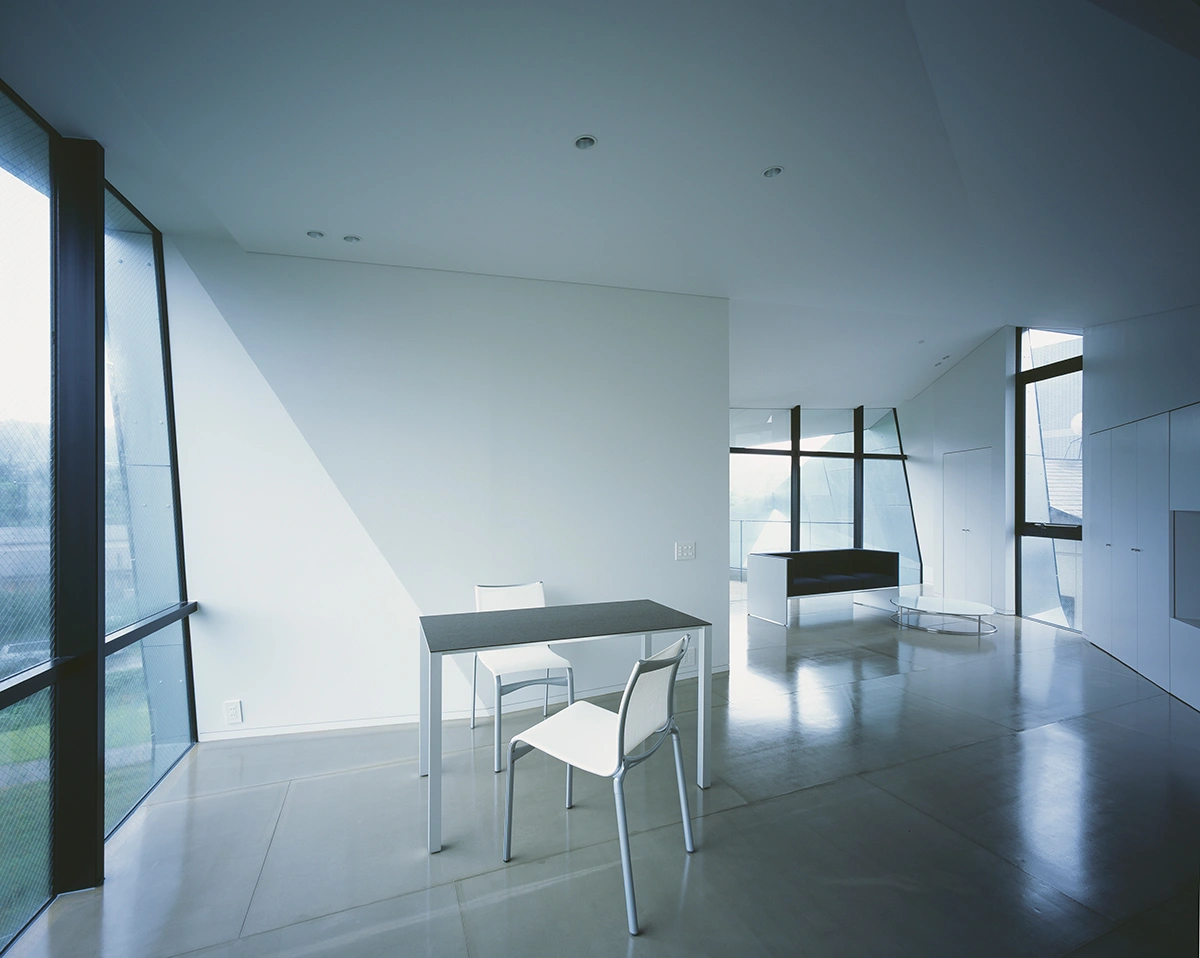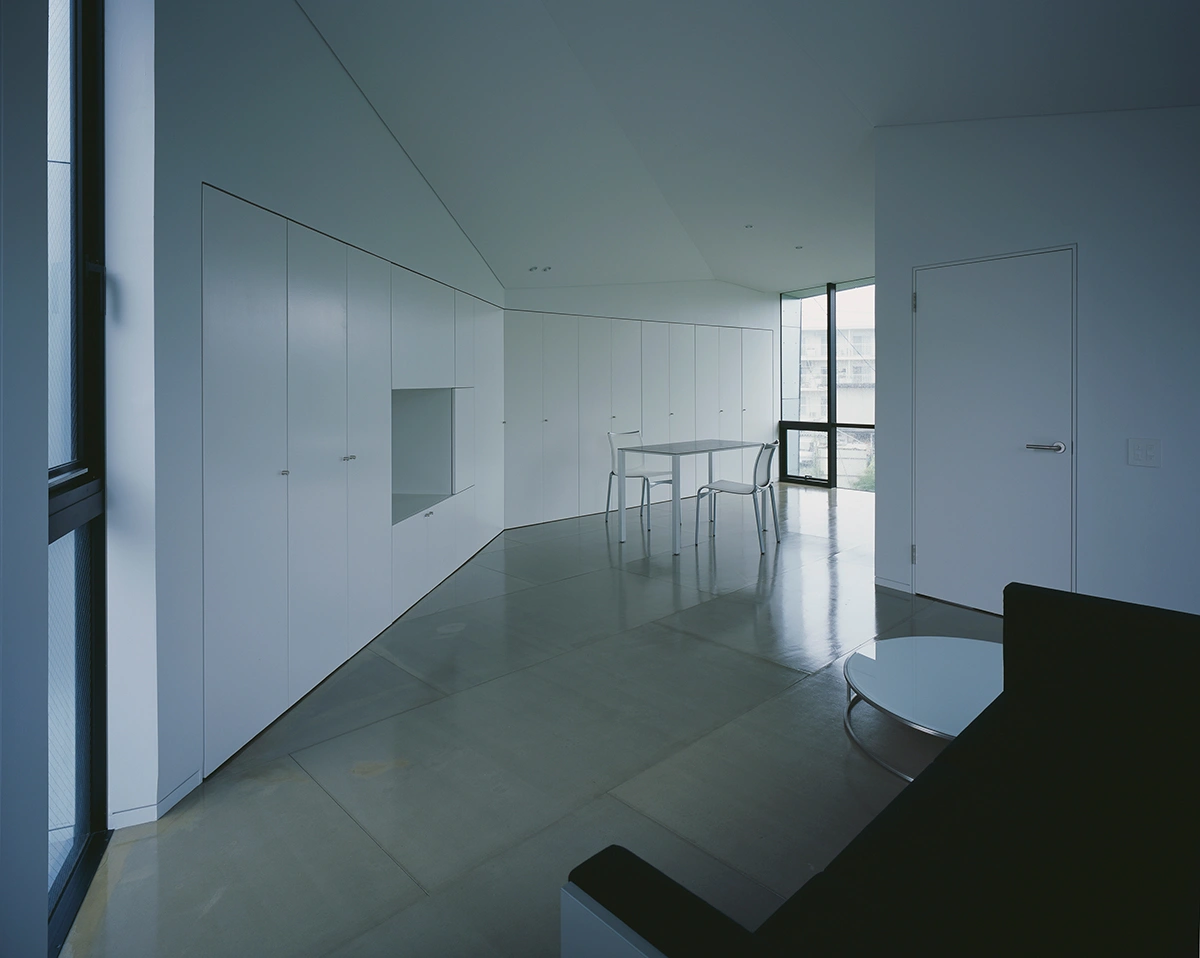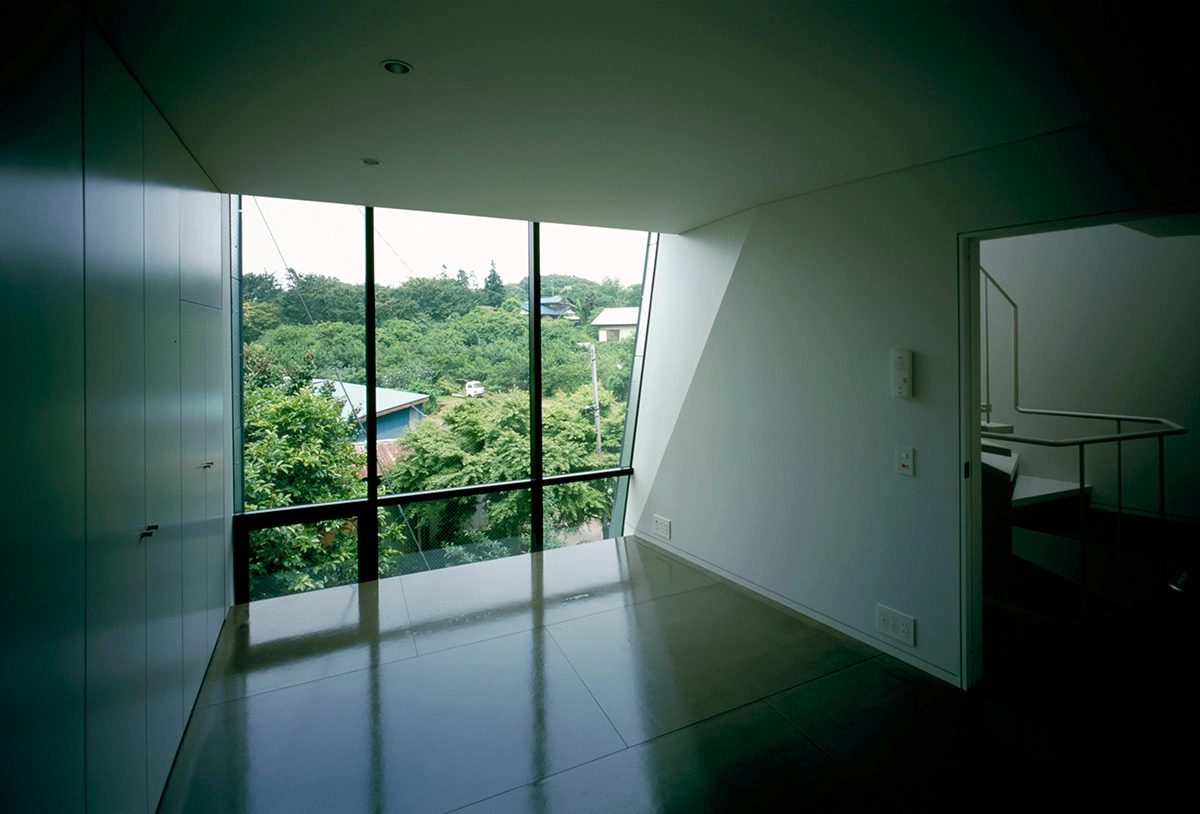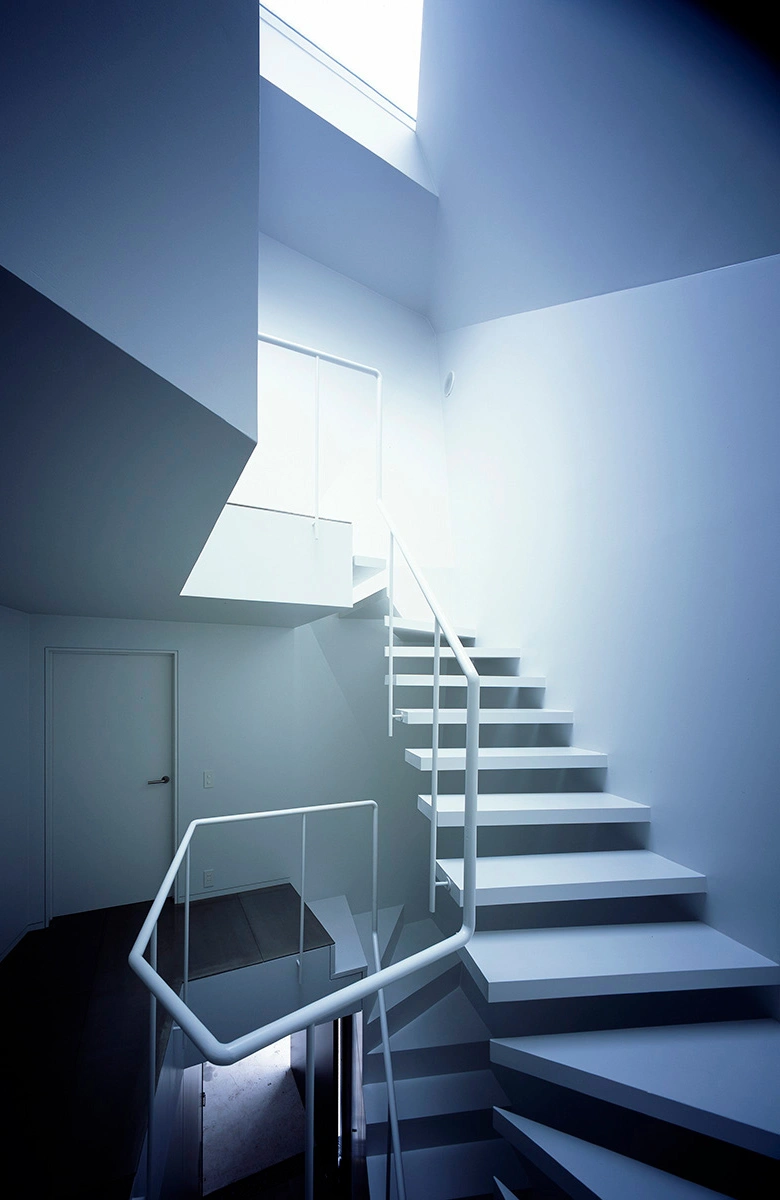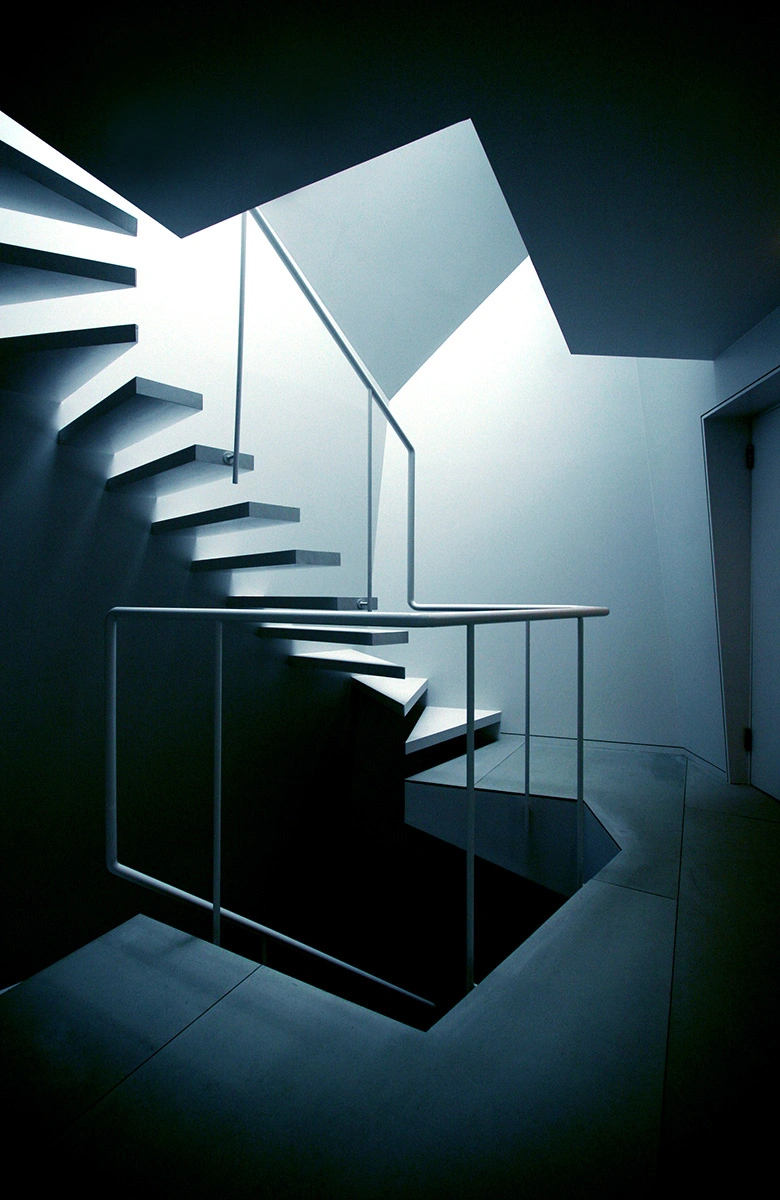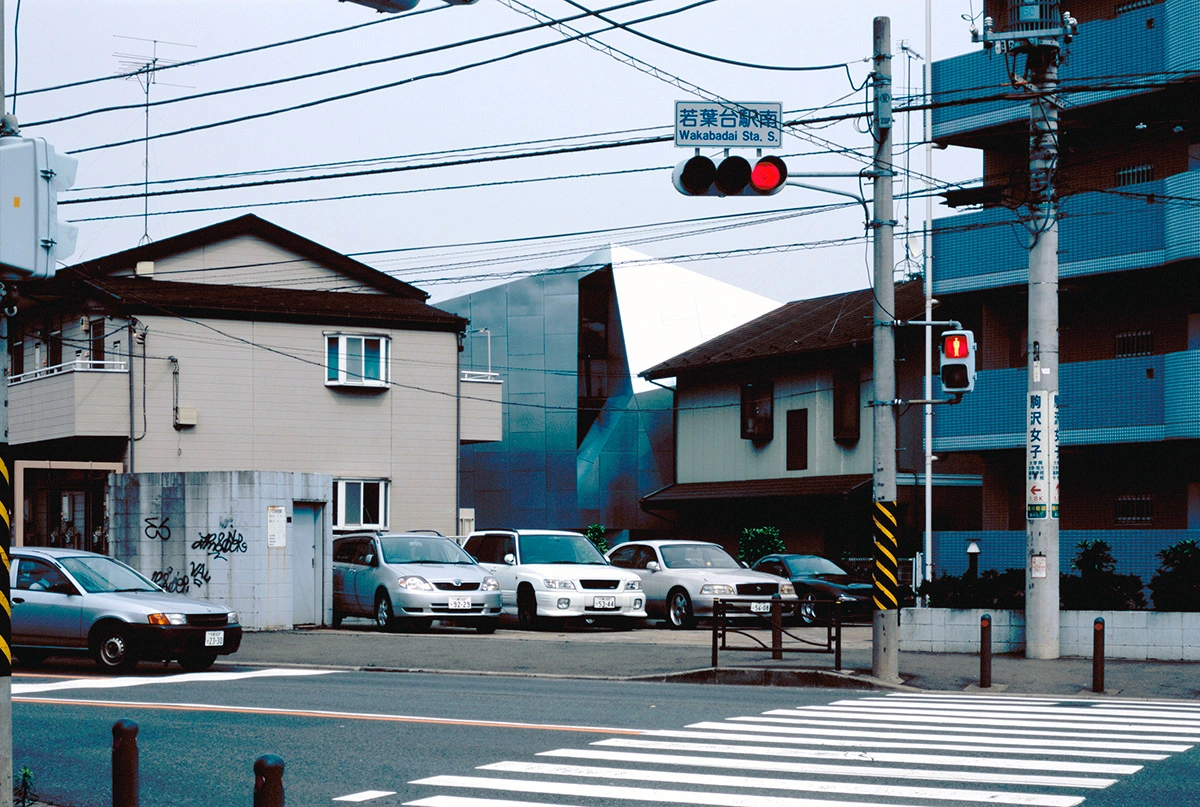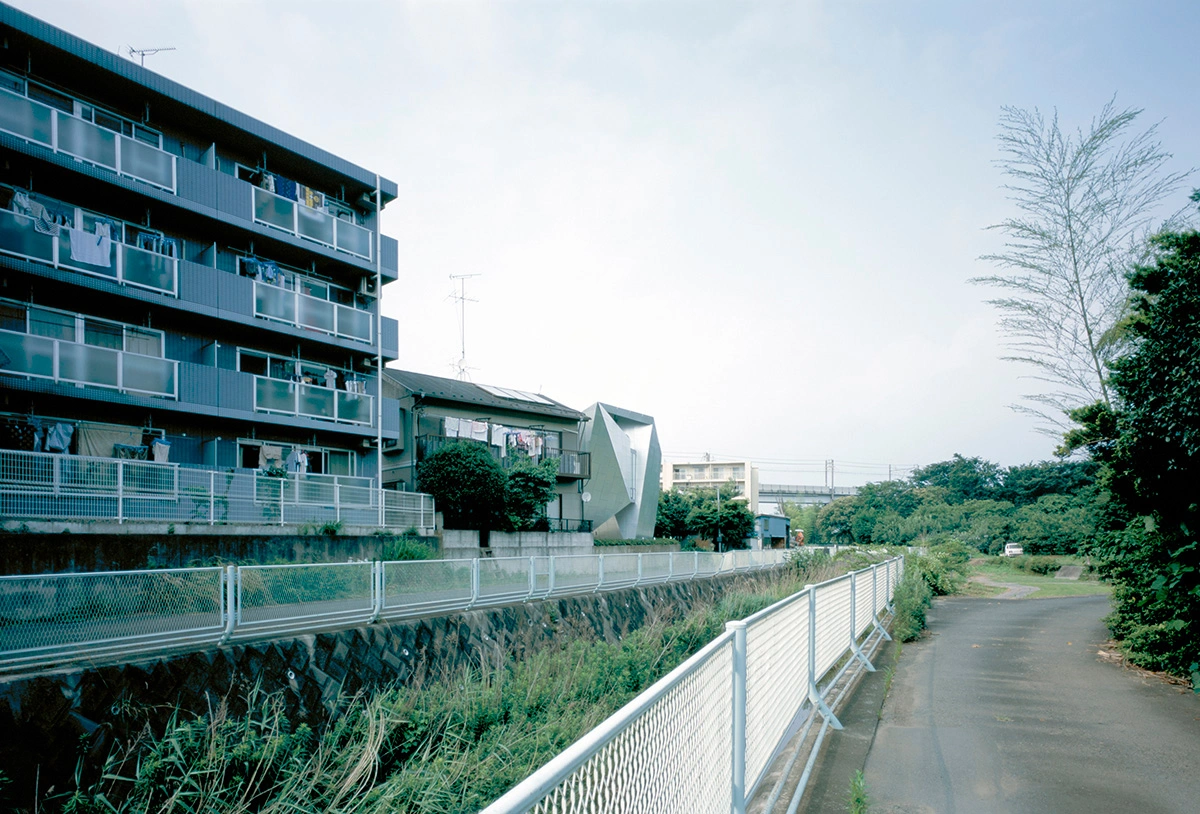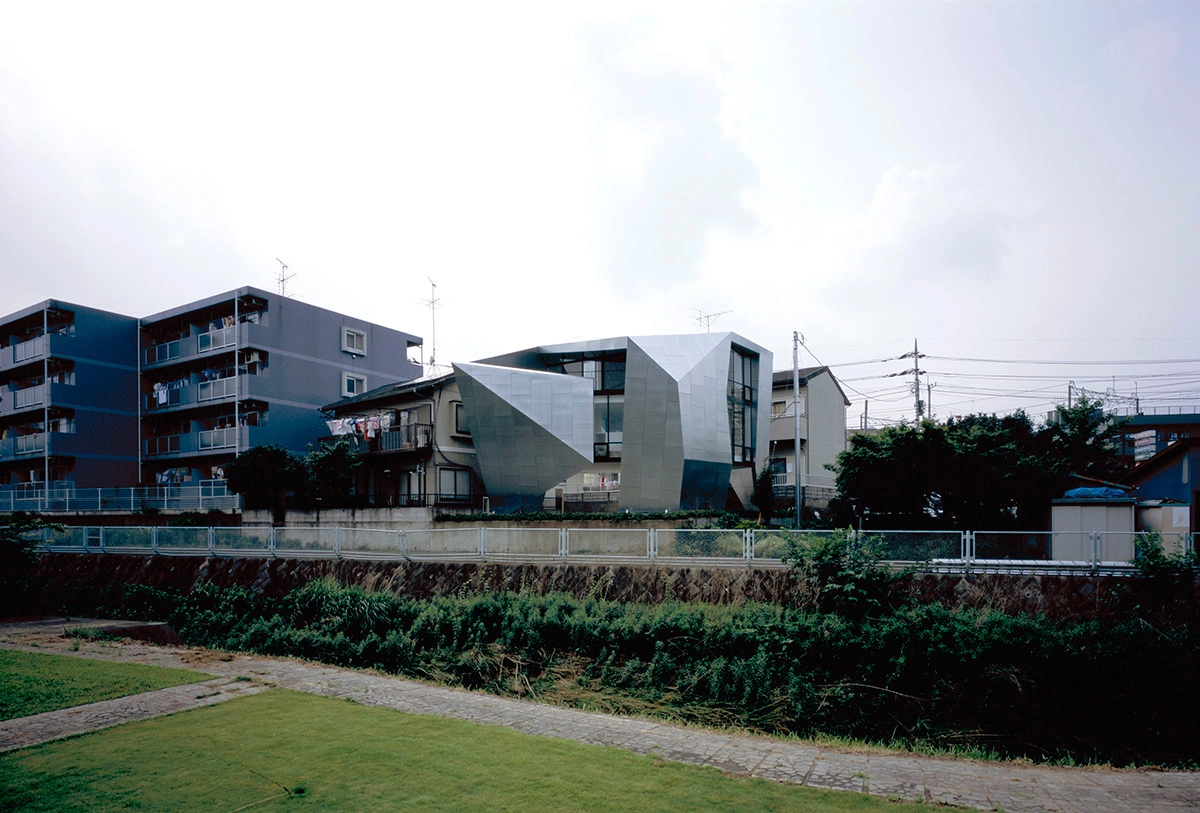A limited Tokyo lot becomes a suspended sculpture: lifted on piloti, framed in timber, folded by regulatory necessity, House in Wakabadai by Satoshi Okada Architects negotiates site, structure, and imagination in a single gesture.
On a narrow alley that leads nowhere but to the river’s edge, Satoshi Okada and his team embrace limitation, turning it into a rigorous spatial proposition.
The lot itself is modest — just 116 m² — yet must accommodate two cars, leaving little room for building. The architects respond with an elegant act of suspension: the house is lifted, its body hovering on generous piloti inspired by the tripod stability of a jumbo jet. The ground plane is freed, the cars parked structurally beneath, and the access issue resolved through vertical volume rather than horizontal sprawl.
Beneath the sculptural shell, the project reveals its technical ingenuity: prefabricated timber modules assembled via a bespoke Log‑Hinge System (LHS). Each “panel” composed of interlocking two‑by‑fours can articulate at varied angles, permitting the facade to twist, tilt, and carve itself into compliance with setbacks and site geometry. The result is a folded, inward‑leaning envelope that appears to dance between regulation and intention.
The structural logic and architectural poetics are inseparable. The inward-tilting façades adjust to both context and rule, while the use of light timber construction guards against the riverside’s unstable soil. Though compact — just 65 m² of internal floor space — the house projects outward in its ambition: a delicate orb of geometry and technique perched over orchard and stream.
House in Wakabadai is not about occupying land so much as negotiating it — in volume, in tension, in craft. It reads as an argument: even on the narrowest, most difficult sites, architecture might still breathe.

